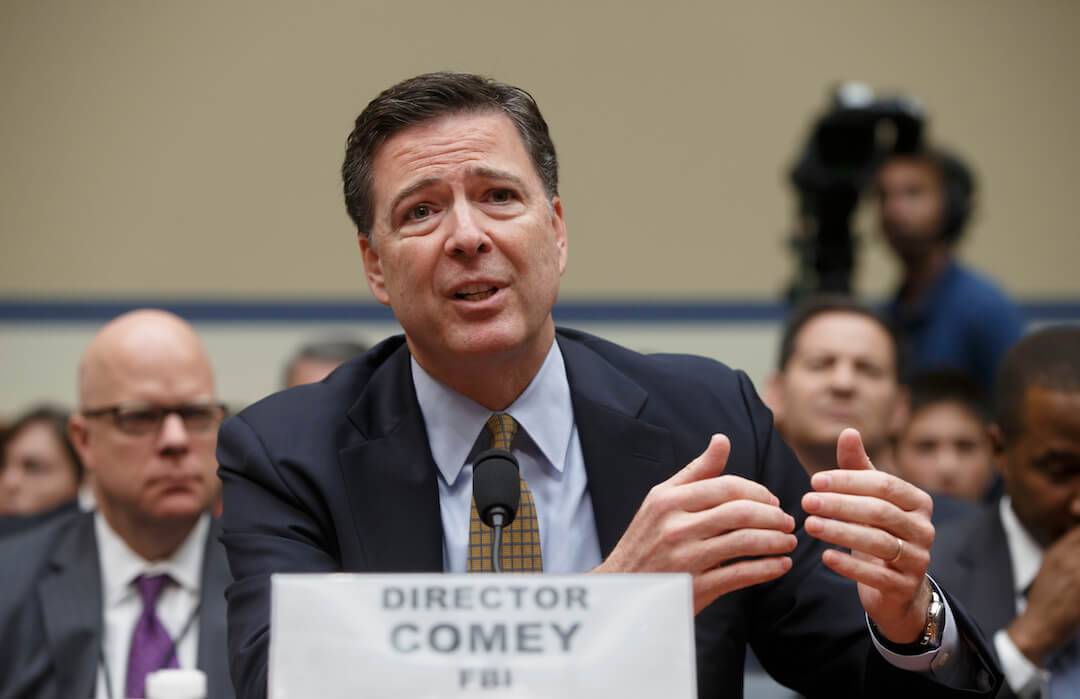Hillary Clinton’s emails are back in the news.
Shortly after former President Donald Trump was indicted on charges over his handling of classified documents, he and his allies have issued condemnations about the former 2016 Democratic nominee never being charged, claiming a double standard.
Many of these claims have also mentioned a couple of things that might sound peculiar to the uninitiated: bleach and hammers.
“The subpoena was there and she decided to delete, acid wash and then smash and destroy her cell phones with a hammer,” Trump said during a June 13 speech at his Bedminster, New Jersey, club hours after pleading not guilty in a Miami courtroom. Trump called the deletion process costly, saying that “nobody” does it “because of the expense,” a claim he has repeated for years.
Trump’s defenders echoed his claims on social media: “There is a two tier system of justice. Hillary Clinton, after receiving a subpoena can bleach emails and destroy evidence with hammers? But Trump is the one they go after because he is a threat to the system,” reads text on a June 12 TikTok video.
So, what is this all about?
Clinton’s use of a private email account during her time as secretary of state from 2009 to 2013 prompted an FBI investigation into her handling of classified information in those emails.
Officials became aware that Clinton used a personal email address on private servers in her Chappaqua, New York, home in 2014 after she turned over about 30,000 work-related emails to the State Department and deleted the rest, saying those involved personal matters, such as her daughter’s wedding plans.
In July 2016, about four months before the presidential election, the FBI announced the findings of its investigation. It said that classified information had been improperly transmitted, but carelessness, not an intent to skirt the law, was the cause.
Some of the information in the agency’s report detailed methods Clinton staffers used to destroy old, unwanted phones and wipe servers of exported data. Here are the details.
The hammer
The FBI’s report from September 2016 mentioned that a Clinton aide used a hammer to destroy some of Clinton’s old mobile devices.
“(Clinton aide Justin) Cooper did recall two instances where he destroyed Clinton’s old mobile devices by breaking them in half or hitting them with a hammer,” the document said.
In the course of its investigation, the FBI determined that 13 devices were associated with Clinton’s phone numbers and personal email, eight of which were used when she was secretary of state. When the Justice Department requested that all devices be handed over, Clinton’s attorneys said they were “unable to locate any of these devices.” One Clinton aide told agents that the locations of Clinton’s unwanted devices would “frequently become unknown.”
Security researchers said at the time that destroying old devices isn’t itself suspicious; While Clinton’s critics see the destroyed devices as an effort to conceal damaging information, the actions could also be a clumsy attempt to protect data.
Jonathan Zdziarski, an iOS forensics expert and security researcher, told Wired in a contemporaneous report that, because Clinton was relying on aides to act as her entire IT team, it was the right idea from a security standpoint to try to destroy the devices rather than letting them sit exposed.
The bottom line: Clinton did not herself use a hammer to destroy cell phones, but people working for her did on at least one or two occasions.
‘Bleaching’ emails
The claims about Clinton “bleaching” emails need context. Neither Clinton nor her team used physical chemicals, including “acid,” to wipe her server.
They used a software program called “BleachBit.”
BleachBit’s software is free, contrary to Trump’s repeated claims that it’s an expensive process. The program wipes junk files to make more room and also removes private information like a virtual shredder, the company says on its website.
After Clinton staffers completed their response to the State Department for her emails in 2014, her former chief of staff, Cheryl Mills, told the FBI that Clinton decided she didn’t need access to any emails older than 60 days.
But the staff members responsible for making the retention change, who were unnamed in the FBI’s report, realized in March 2015 it hadn’t been done. They requested that IT workers permanently delete the archived emails and use BleachBit to delete the exported files.
This was after Clinton received a subpoena from the House Select Committee on Benghazi for records relating to the 2012 attacks on the U.S. outpost in Libya.
The conclusion from the FBI was that Clinton treated sensitive, classified information in her emails “extremely” carelessly. But then-FBI director James Comey said there was no evidence that she intentionally deleted emails to conceal them or obstruct justice.
This fact check was originally published by PolitiFact, which is part of the Poynter Institute. See the sources for this fact check here .







